Carbon capture and storage
Type of resources
Topics
Keywords
Contact for the resource
Provided by
Years
Formats
Representation types
Update frequencies
Scale
-
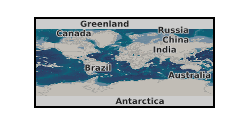
The supporting data for C. Harris et al., 2021, 'The impact of heterogeneity on the capillary trapping of CO2 in the Captain Sandstone', International Journal of Greenhouse Gas Control. We supply experimental and numerical simulation data used in the paper. The supplied codes reproduce each figure. The codes are split into 2 folders, descriptions of each of the folders are given below: 0 - README. This contains detailed instructions on using the supplied files. 1 - Main simulations. This contains the code to produce the main CMG (Computer Modelling Group) simulations outlined in the paper, with various input variable files. 2 - Other figures. This contains the code to produce other figures within the paper which do not rely on numerical simulations, including the experimental data.
-
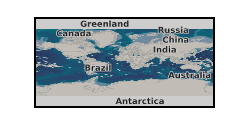
UKCCSRC Flexible Funding 2020. The experimental data was collected on a 1-inch bore gas-liquid two-phase CO2 flow rig in real time. The first column of the table is the time stamp. The second to 19th columns are the mass flowrates, temperatures, densities and tube frequencies from Coriolis flowmeters installed on the gas phase section, liquid phase section, horizontal test section and vertical test section, respectively. The last column of the datafile is the reading from the differential pressure (DP) transducer installed across the Coriolis flowmeter on the horizontal test section. UKCCSRC Flexible Funding 2020: Monitoring of CO2 flow under CCS conditions through multi-modal sensing and machine learning.
-
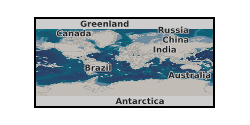
Full proposal cover sheet for scientific drilling (852-CPP) 'GlaciStore: Understanding Late Cenozoic glaciation and basin processes for the development of secure large-scale offshore CO2 storage (North Sea)', submitted to Integrated Ocean Discovery Programme (IODP) April 2014. The full proposal cover sheet document is publicly available from IODP; the submitted full proposal document is restricted to the proponents for publication and for review and response from IODP. The lead submitter, on behalf to the GlaciStore consortium is Heather Stewart, British Geological Survey (BGS).The 30 proponents are from research and industry organisations in the UK, Norway and USA (BGS, Institute for Energy Technology, Lundin Norway AS, SINTEF Energy Research, Statoil ASA, University of Bergen, University of Edinburgh, University of Oslo and University of Texas at Austin). The full proposal cover sheet states the names of proponents of the ‘GlaciStore’ consortium and contact details for the lead submitter of the bid. The full proposal cover sheet comprises: an abstract of the submitted full proposal including description of project funding support as a Complementary Project Proposal: describes and states the scientific research objectives; summarises proposed non-standard measurements; tabulates details of the 13 proposed drill sites (revised from pre-proposal stage) to address the scientific objectives. The objectives are to investigate: glacial history and sedimentary architecture; fluid flow and microbial processes in shallow sediments; and the stress history and geomechanical models for strata that have experienced multiple glacial and interglacial cycles. The table of proposed drilling sites includes the co-ordinates of the position and water depth at each proposed site, the objective for drilling and sampling and the depth to achieve the objective. The proponents, their affiliation, expertise and role for the submission are listed. UKCCSRC Grant UKCCSRC-C1-30.
-
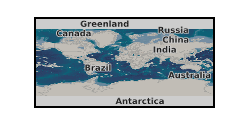
Revised full proposal cover sheet for scientific drilling (852-CPP2) 'GlaciStore: Understanding Pleistocene glaciation and basin processes and their impact on fluid migration pathways (North Sea)', submitted to Integrated Ocean Discovery Programme (IODP) April 2016. The full proposal cover sheet document is publicly available from IODP; the submitted full proposal document is restricted to the proponents for publication and for review and response from IODP. The proposal is a revision of full proposal 852-CPP in response to review by IODP. The lead submitter, on behalf to the GlaciStore consortium is Heather Stewart, British Geological Survey (BGS).The 32 proponents are from research and industry organisations in the UK, Norway, USA and Canada (BGS, Institute for Energy Technology, Lundin Norway AS, Memorial University of Newfoundland, SINTEF Energy Research, Statoil ASA, University of Bergen, University of Edinburgh, University of Oslo and University of Ottawa University of Texas at Austin). The revised full proposal cover sheet states the names of proponents of the 'GlaciStore' consortium and details for the lead submitter of the bid. The full proposal cover sheet comprises: an abstract of the submitted full proposal including description of project funding support as a Complementary Project Proposal: describes and states the scientific research objectives; summarises proposed non-standard measurements; tabulates details of the 13 proposed drill sites (revised from full proposal CPP-852) to address the scientific objectives. The objectives are to investigate: glacial history and sedimentary architecture; fluid flow and microbial processes in shallow sediments; and the stress history and geomechanical models for strata that have experienced multiple glacial and interglacial cycles. The table of revised proposed drilling sites includes designation of primary or alternate sites, the co-ordinates of the position and water depth at each proposed site, the objective for drilling and sampling and the depth to achieve the objective. The proponents, their affiliation, expertise and role for the submission are listed. UKCCSRC Grant UKCCSRC-C1-30.
-
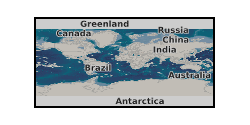
UKCCSRC Flexible Funding 2020. Experimental data are the acoustic emission (AE) signals collected with three AE sensors when CO2 leak from a CO2 storage cylinder under different pressures. '5MPa_20kgh-1' means the data was collected when the pressure was 5MPa and the leakage rate was 20 kg/h. The sampling frequency of AE signals is 3MHz. UKCCSRC Flexible Funding 2020: Monitoring of CO2 flow under CCS conditions through multi-modal sensing and machine learning.
-
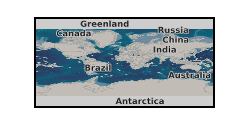
Carbon capture and storage in sub-seabed geological formations (sub-seabed CCS) is currently being studied as a realistic option to mitigate the accumulation of anthropogenic CO2 in the atmosphere. In implementing sub-seabed CCS, detecting and monitoring the impact of the sequestered CO2 on the ocean environment is highly important. The first controlled CO2 release experiment, Quantifying and Monitoring Potential Ecosystem Impacts of Geological Carbon Storage (QICS), took place in Ardmucknish Bay, Oban, in May–September 2012. We applied the in situ pH/pCO2 sensor to the QICS experiment for detection and monitoring of leaked CO2, and carried out several observations. The cabled real-time sensor was deployed close to the CO2 leakage (bubbling) area, and the fluctuations of in situ pH and pCO2 above the seafloor were monitored in a land-based container. The long-term sensor was placed on seafloor in three different observation zones. The sediment pH sensor was inserted into the sediment at a depth of 50 cm beneath the seafloor near the CO2 leakage area. Wide-area mapping surveys of pH and pCO2 in water column around the CO2 leakage area were carried out by using an autonomous underwater vehicle (AUV) installed with sensors. Atmospheric CO2 above the leakage area was observed by using a CO2 analyzer that was attached to the bow of ship of 50 cm above the sea-surface. The behavior of the leaked CO2 is highly dependent on the tidal periodicity (low tide or high tide) during the CO2 gas release period. At low tide, the pH in sediment and overlying seawater decreased due to strong eruption of CO2 gas bubbles, and the CO2 ascended to sea-surface quickly with a little dissolution to seawater and dispersed into the atmosphere. On the other hand, the CO2 bubbles release was lower at high tide due to higher water pressure, and slight low pH seawater and high atmospheric CO2 were detected. After stopping CO2 gas injection, no remarkable variations of pH in sediment and overlying water column were observed for three months. This is a publication in QICS Special Issue - International Journal of Greenhouse Gas Control, Kiminori Shitashima et. al. Doi: 10.1016/j.ijggc.2014.12.011.
-
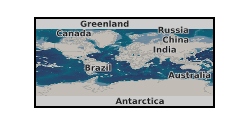
This data was collected as a part of the UK CCS Research Centre Call 2 Project C2-197: Multi scale characterisation of CO2 Storage in the United Kingdom. This is tabular data and X-ray imagery of drainage and imbibition relative permeability measured on reservoir rocks from the S. North Sea, N. North Sea, and E. Irish Sea of the Offshore UK. The data were obtained through measurements made at two distinct flow rates to allow for an evaluation of the impact of rock heterogeneity. Full details of the rock properties and experiments can be found in Reynolds et al. (2018) reference 3 below, the Final Report of the Project, as well as in the PhD Thesis of Catriona Reynolds with full references given below. Any use of the data should reference the journal article, reference 3 below. Geographical Area - Bunter sandstone in S. North Sea, Cleethorpes-1 Well, 1312.7-1316.1 m depth; Ormsirk sandstone in E. Irish Sea, Block 110/2a, 1247.9-1248.1 m depth; Captain sandstone in N. North Sea, Well 14/29a-3, 2997.6-3005.1 m depth. References 1. Imperial College London and British Geological Survey, Multiscale Characterisation of CO2 Storage in the United Kingdom, UKCCSRC Call 2 Project Final Report, 2016 2. Reynolds, C. Two-phase flow behaviour and relative permeability between CO2 and brine in sandstones at the pore and core scales, PhD Thesis, 2016, Imperial College London. 3. Reynolds, C.A., Blunt, M.J., Krevor, S. 2018, Multiphase flow characteristics of heterogeneous rocks from CO2 storage reservoirs in the United Kingdom, Water Resources Research, 54, 2, 729-745
-
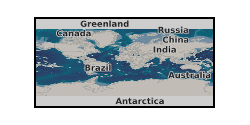
Technical briefing report, August 2013. This briefing summarises the most recent published report addressing the scope for CCS in European industry (ZEP, 2013), adds further information from public sources and gives some new analysis of the implications. Available for download at http://hdl.handle.net/1842/16474.
-
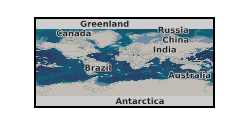
The RISCS (Research into Impacts and Safety in CO2 Storage) project assessed the potential environmental impacts of leakage from geological CO2 storage. Consideration was given to possible impacts on groundwater resources and on near surface ecosystems both onshore and offshore. The aim of the project was to assist storage site operators and regulators in assessing the potential impacts of leakage so that these could be considered during all phases of a storage project (project design, site characterisation, site operation, post-operation and site abandonment, and following transfer of liability back to the state). A secondary objective was to inform policy makers, politicians and the general public of the feasibility and long-term benefits and consequences of large-scale CO2 capture and storage (CCS) deployment. The Final Report can be downloaded from http://cordis.europa.eu/docs/results/240/240837/final1-riscs-final-report-final.pdf.
-
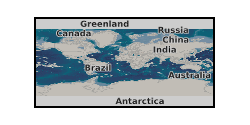
This presentation on the UKCCSRC Call 1 project, Oxyfuel and EGR Processes in GT Combustion, was presented at the Cardiff Biannual, 11.09.15. Grant number: UKCCSRC-C1-26.
 NERC Data Catalogue Service
NERC Data Catalogue Service